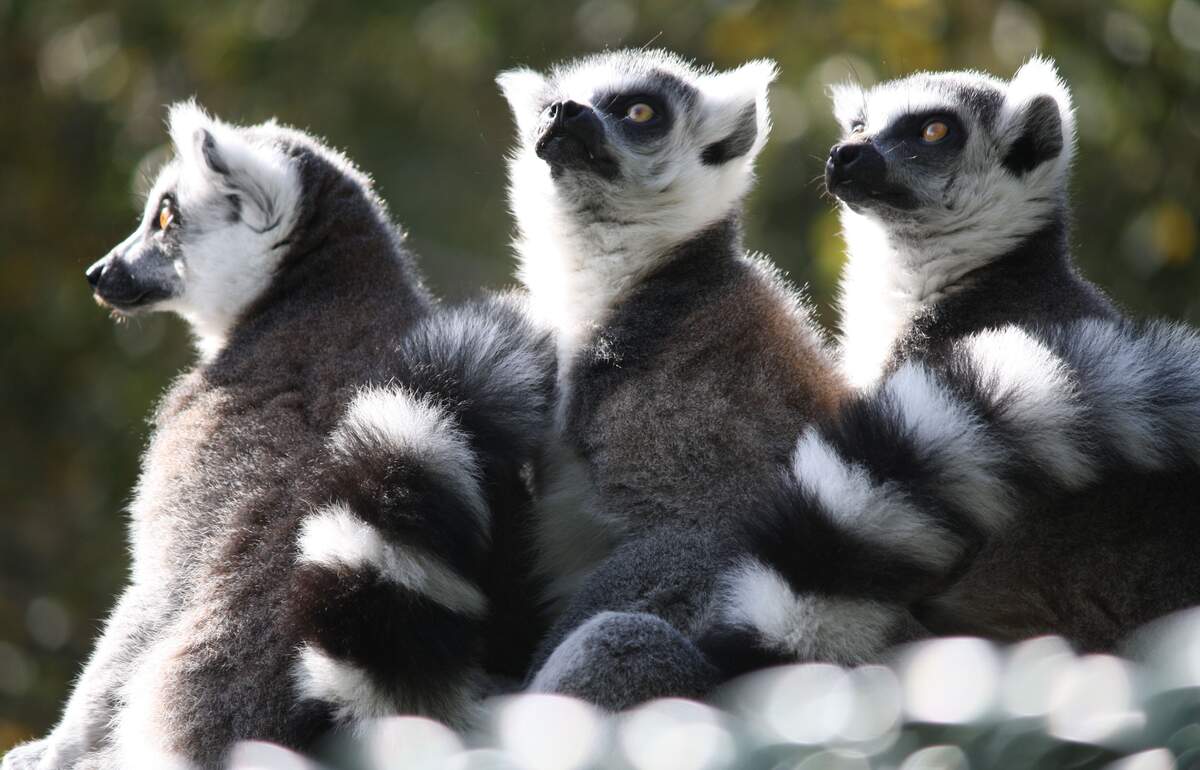

World Lemur Day
Observed
the last Friday in October (since 2014)
Dates
Founded by
Hashtags
Sources
World Lemur Day celebrates lemurs and spreads the word about the need to conserve them; it inspires a love for them and actions to save them from extinction. It also celebrates Madagascar, the island nation located 250 miles off the east coast of Africa that lemurs call home. Events are held around the world on the day, in person and virtually. World Lemur Day takes place on the last Friday of October, and the World Lemur Festival takes place during the weeks surrounding it.
Madagascar is rich in biodiversity, and much of its flora and fauna can be found nowhere else in the world, as is the case with lemurs. Scientists believe that lemurs may have gotten their start on Africa's mainland before arriving; they think lemurs floated to the island on vegetation, and then evolved and diversified over millions of years. Madagascar was a favorable environment for them because the landscape was habitable, there were varied food sources, and there weren't any large predators.
Today there are over 100 species of lemurs. By one count there are 112, but the number changes when new ones are identified through discoveries and genetic testing. Subfossils indicate there once were more and that some became extinct, possibly from being hunted by humans after humans arrived on the island. The 2020 update of the IUCN Red List of Threatened Species indicated that almost all lemur species were threatened with extinction and that almost a third were critically endangered.
The smallest lemur is the Madame's Berthe mouse lemur, weighing in at 30 grams, and the largest is the indri, which may weigh up to 9.5 kilograms. Subfossils indicate that some lemurs were once as large as gorillas. Some other lemurs are the ring-tailed lemur, dancing sifaka, and aye-aye. Lemurs have unique traits in common. They have a heightened sense of smell because of their long snouts and wet noses and have improved night vision because of their tapetum lucidum, an extra layer of tissue behind their retina. All lemurs except aye-ayes have incisors and canines that lean forward instead of upward, called toothcombs, which are used for grooming, as well as to eat seeds and bark.
The forests of Madagascar benefit from lemurs, who help them grow by pollinating plants and dispersing seeds. Lemurs eat fruit but don't digest the seeds, and leave the seeds around the forest in their droppings. They also may get seeds and pollen stuck in their fur while looking for fruits and nectar, and may pass them onto other flowers.
To protect lemurs, the challenges and threats they face must be known. They face habitat change and loss, climate change, invasive species, and poaching. The forests of Madagascar are decreasing in size, changing the habitats of lemurs. This negatively impacts individual lemurs and the species as a whole. Madagascar is one of the top countries affected by climate change caused by humans. Droughts in the south and yearly monsoons in the north have become more prevalent in the twenty-first century, affecting all life on the island, including lemurs. Being that Madagascar developed in isolation when non-native species enter the ecosystem, they can threaten those that live there. Lemurs are also hunted for the pet trade, for food, and for cultural reasons.
A "fady" is a taboo of the Malagasy people, those who reside in Madagascar. For some, hunting, killing, or eating the indri is fady, since legend says that the spirits of ancestors live on within them. The aye-aye is associated with evil, and legend says that bad things may happen to those who see one. They are often killed because of this.
Lemurs benefit from ecotourism. Those visiting Madagascar bring money to the local economy, and, in turn, the Malagasy see the benefit of having the lemurs around—tourism wouldn't thrive without them. As the economy grows, the lemurs benefit. Conservation work in Madagascar is complex and supports wildlife, habitats, and people. Building relationships with and working with the Malagasy is crucial. Establishing and maintaining protected areas, reforestation efforts, dealing with invasive species, captive breeding at zoos, and reintroducing and relocating species are all part of conservation efforts. These efforts are given a boost today with World Lemur Day!
How to Observe World Lemur Day
World Lemur Day is celebrated individually, but also by zoos and other organizations. Some ideas for participation include:
- Post on social media with the hashtag #WorldLemurDay and tag the Lemur Conservation Network. They can be found on Facebook, Twitter, and Instagram. Focus your posts on the urgency of lemur conservation and how everyone can help make a difference and save lemurs from extinction by working together. Use the social media guide to help you craft your posts.
- Utilize the Lemur Conservation Network's participation guide for ideas on how individuals, member organizations, zoos, educators, and libraries can participate. For individuals, they suggest holding a fundraiser for a Lemur Conservation Network's member organization; sharing photos of lemurs seen at zoos or during travel to Madagascar, along with information about them, what is loved about them, and memories of the trip; creating and sharing information graphics about lemurs; holding a community event, such as a lemur-themed happy hour, film screening, or costume party; visiting a school to teach kids about lemurs; or walking around in a lemur costume.
- Plan your own event. Consider collaborating with a Lemur Conservation Network member organization to create one. Send details about your activity or event to the Lemur Conservation Network for them to add to their event calendar, and check the calendar for other events to attend.
- Join the Lemur Conservation Network.
- Volunteer with the Lemur Conservation Network or with an organization in Madagascar that protects lemurs.
- Read a book about Madagascar.
- Listen to a podcast about lemurs or Madagascar.
- If you are a teacher, you could use the Lemur Conservation Network's teaching resources for your classroom.
- Check out the Lemur Conservation Network's "Professional Resources for Research and Conservation."
- Check for other ideas on the Lemur Conservation Network's "How to Help" page.
- The Lemur Conservation Network suggests contacting them to learn more about participating in the day.





















